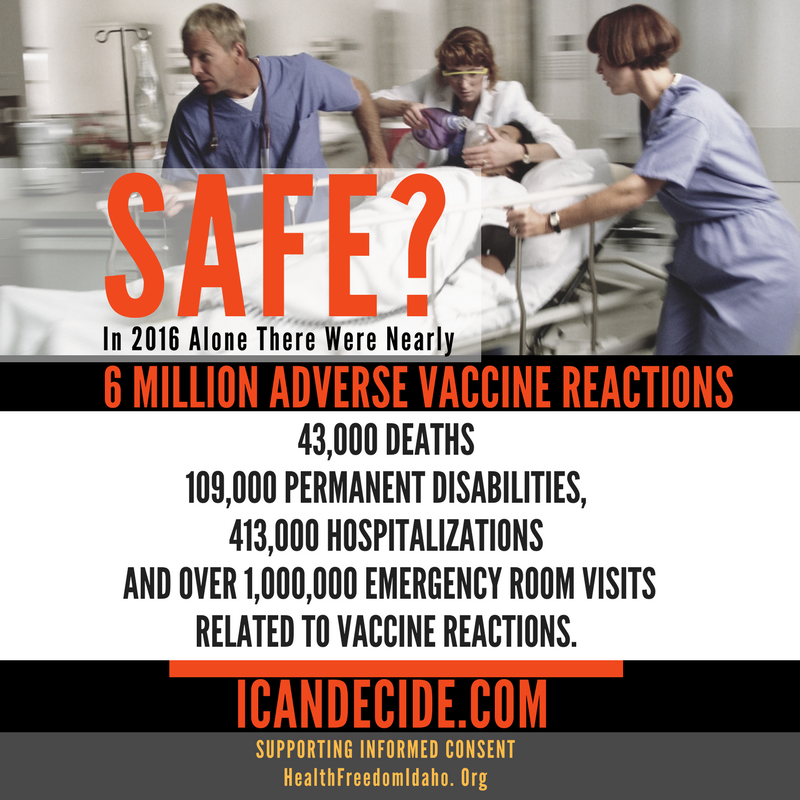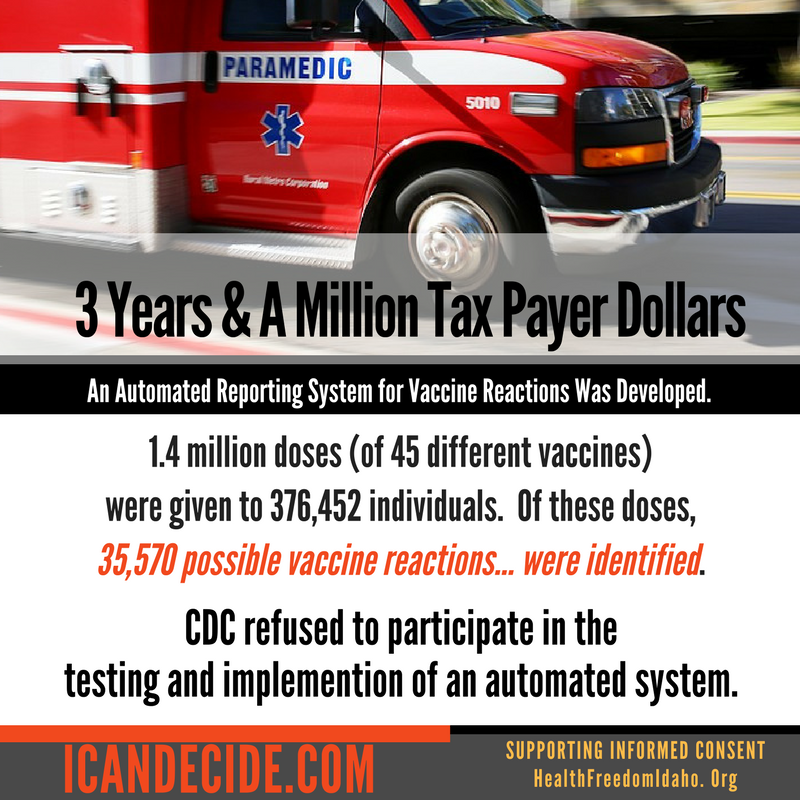VACCINE SAFETY Part 3: The 100 fold increase of vaccine adverse reactions when reporting was automated

Vaccine reactions are known and hardly reported. When a system was developed to automatically report adverse reactions to vaccines it proved that they occur in rates greater than 1 in a million (as claimed by the CDC). Why would an organization that claims to be dedicated to the protection of health eliminate the opportunity to identify vaccines that cause harm to a large portion of the population?
ICAN spent months researching the state of vaccine safety in the United States. The shocking result of this effort was presented to the heads of the National Institutes of Health with Robert F. Kennedy, Jr. in May of 2017.
The information contained in that presentation has been distilled into an easy to read, thorough white paper that goes through many of the shortcomings and failures of the vaccine safety program. This is PART III of that paper. A U.S. House Report similarly stated: “Former FDA Commissioner David A. Kessler has estimated that VAERS reports currently represent only a fraction of the serious adverse events.”31 X
VAERS (the U.S. vaccine adverse event reporting system) is that it is a passive reporting system, relying on voluntary, rather than mandatory, reporting. Assuming VAERS captures 1 percent of adverse events (which is more than is estimated),
then the number of adverse events reported to VAERS in 2016 would reflect for that year
5,911,700 adverse events,
43,200 deaths
109,100 permanent disabilities
413,200 hospitalizations
and 1,028,400 emergency room visits related to vaccines.
Capturing “fewer than 1% of vaccine adverse events” thirty years after the passage of the 1986 Act is unacceptable – and potentially deadly.
Did you know an automated system was developed and the CDC refused to implement it?

Numerous reviews of VAERS have found that only a tiny fraction of vaccine adverse events are reported. For example, an HHS-funded review of vaccine adverse events over a three-year period by Harvard Medical School involving 715,000 patients found that “fewer than 1% of vaccine adverse events are reported.”30
It would be far better if adverse events reports were automatically created and submitted to VAERS to avoid the issue of under-reporting. Automated reporting would provide invaluable information that could clarify which vaccines might cause harm and to whom, potentially allowing us to avoid these injuries and deaths. The idea of automating adverse event reporting to VAERS is not new or even difficult to achieve.32
The Agency for Healthcare Research and Quality, an agency within HHS, sought to do exactly that in 2007 when it provided an approximately $1 million grant to automate VAERS reporting at Harvard Pilgrim Health Care.33 The result was the successful automation of adverse event reports at Harvard Pilgrim: Preliminary data were collected from June 2006 through October 2009 on 715,000 patients, and 1.4 million doses (of 45 different vaccines) were given to 376,452 individuals. Of these doses, 35,570 possible reactions … were identified.34 These results should have been startling to HHS since they show that over only a three-year period, there were 35,570 reportable reactions in just 376,452 vaccine recipients. Given HHS’s statutory mandate to assure safer vaccines, it should have rushed forward with automating VAERS reporting. However, this is not what happened.

After automating adverse event reports at Harvard Pilgrim, the developers of this system asked the CDC to take the final step of linking VAERS with the Harvard Pilgrim system so that these reports could be automatically transmitted into VAERS. Instead, the CDC refused to cooperate.
As the Harvard grant recipients explained: Unfortunately, there was never an opportunity to perform system performance assessments because the necessary CDC contacts were no longer available and the CDC consultants responsible for receiving data were no longer responsive to our multiple requests to proceed with testing and evaluation.35
After three years and spending $1 million of taxpayers’ money, the CDC refused to even communicate with the HHS’ Harvard Medical School grant recipients. While HHS generally strongly supports automating public health surveillance systems, when it comes to vaccine safety, the CDC has only supported projects that would limit VAERS to passive surveillance.36
Automation would improve safety and address many of the long-standing issues and limitations raised by CDC regarding VAERS.37
Find out more at Vaccine Safety Paper fromIcandecide.com
- 32 https://healthit.ahrq.gov/ahrq-funded-projects/electronicsupport-public-health-vaccine-adverse-event-reporting-system
- 33 https://healthit.ahrq.gov/sites/default/files/docs/publication/r18hs017045-aruslaz-final-report-2011.pdf
- 34 Ibid.
35 Ibid. - 36 http://www.ajpmonline.org/article/S0749-3797(12)00249- 8/pdf; https://www.ncbi.nlm.nih.gov/pubmed/26209838; https://www. ncbi.nlm.nih.gov/pmc/articles/PMC4632204/
- 37 Ibid.
Only 1% of vaccine injury is reported to VAERS https://healthit.ahrq.gov/sites/default/files/docs/publication/r18hs017045-lazarus-final-report-2011.pdf






